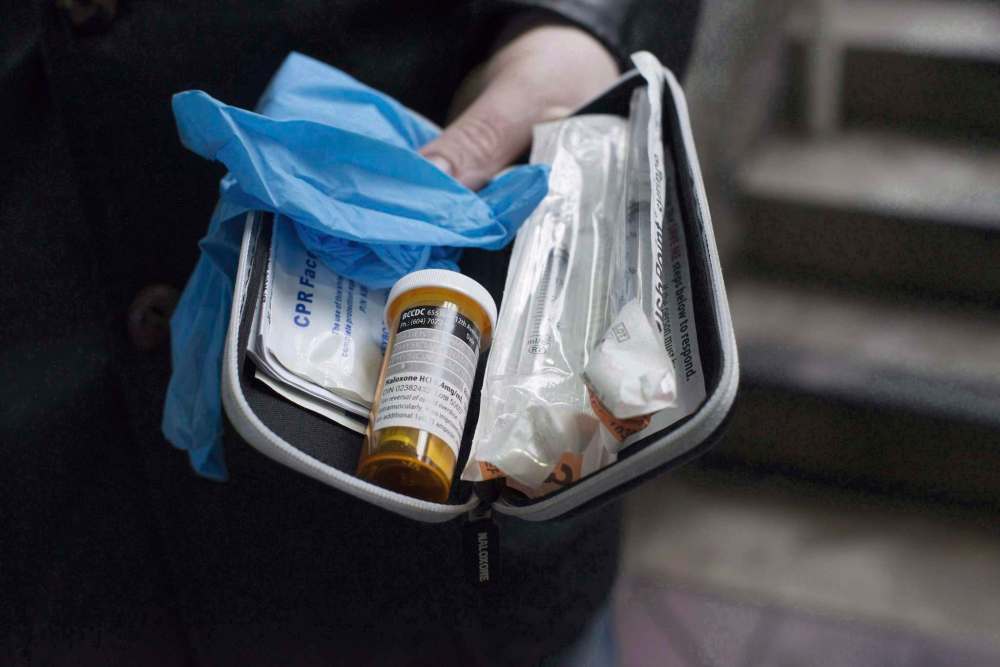Province’s opioid poisoning numbers not as bad as rest of the country: report
Advertisement
Read this article for free:
or
Already have an account? Log in here »
To continue reading, please subscribe:
Monthly Digital Subscription
$0 for the first 4 weeks*
- Enjoy unlimited reading on winnipegfreepress.com
- Read the E-Edition, our digital replica newspaper
- Access News Break, our award-winning app
- Play interactive puzzles
*No charge for 4 weeks then price increases to the regular rate of $19.00 plus GST every four weeks. Offer available to new and qualified returning subscribers only. Cancel any time.
Monthly Digital Subscription
$4.75/week*
- Enjoy unlimited reading on winnipegfreepress.com
- Read the E-Edition, our digital replica newspaper
- Access News Break, our award-winning app
- Play interactive puzzles
*Billed as $19 plus GST every four weeks. Cancel any time.
To continue reading, please subscribe:
Add Free Press access to your Brandon Sun subscription for only an additional
$1 for the first 4 weeks*
*Your next subscription payment will increase by $1.00 and you will be charged $16.99 plus GST for four weeks. After four weeks, your payment will increase to $23.99 plus GST every four weeks.
Read unlimited articles for free today:
or
Already have an account? Log in here »
Hey there, time traveller!
This article was published 14/09/2017 (3003 days ago), so information in it may no longer be current.
More than a hundred Manitobans are hospitalized every year for significant opioid poisoning, according to a new report from the Canadian Institute for Health Information.
While Manitoba’s hospitalization rate is considerably lower than most other provinces and relatively stable, experts caution that the figure alone is not indicative of the seriousness of the province’s opioid issues.
To understand the full extent of the Canadian health crisis, people need to factor in emergency room visits as well as deaths related to opioids, said Michael Gaucher, director of pharmaceuticals and health workforce information services with CIHI.

“The positive is that the rate is certainly lower than some other provinces and it doesn’t seem to be growing significantly,” he said, but “it’s those three measures that really give the full picture.”
Still, CIHI’s report on opioid poisonings requiring hospitalization paints a grim picture. The Canadian rate has more than doubled in the last decade with the bulk of the increase happening in the last three years alone. Right now, an average of 16 people are hospitalized across Canada every day.
“What’s happened over the last three years is quite significant,” Gaucher said. “The problem’s not just in the downtown areas, it’s really in the suburbs and rural areas of the country as well.”
According to information released Thursday by Health Canada, 2,816 deaths across the country last year were related to opioids, with nearly 1,000 people dying in British Columbia and nearly 900 in Ontario. In Manitoba, 69 deaths were connected to opioids.
“A lot of these harms are preventable,” said Gaucher, who noted that even in cities and provinces, like Winnipeg and Manitoba, where hospitalization rates and the death toll are lower, there is work to be done.
“Its important to continue to monitor the situation,” he said, “because certainly the situation could change.”
Better tracking is one of Manitoba’s priorities, according to the Winnipeg Regional Health Authority’s medical director of health, Dr. Joss Reimer.
The WRHA has been working with Winnipeg Fire and Paramedic Service to more actively track when a paramedic is administering Naloxone, a drug that blocks the effects of an overdose, as well as tracking emergency room visits prompted by drug overdoses.
But it’s not possible for the hospital to see which drug numbers are specifically related to opioids. That, in conjunction with the fact that some people arrive unconscious or aren’t clearly deemed to be overdosing, means “in some ways we may be undercounting… at the same time we’re over counting,” Reimer said.
It’s also hard to tell right now, she said, whether Manitoba’s opioid problems are linked more to prescription drugs or illegal ones. Although, she does hear anecdotal stories from health care workers in the ER.
“They’re seeing an increase in some of the illegal forms being the cause of the overdose and they’re seeing people coming in with a more severe level of overdose,” she said, so “unconscious, not breathing and requiring higher doses of Naloxone to counteract the overdose.”
Still, there are no hard and fast numbers, Reimer said, and “It’s tough to say with any level of certainty.”
jane.gerster@freepress.mb.ca



